Everything you need to know about F-16s arriving in Ukraine
- By Alex Hollings
Share This Article

More than two years since Russia’s full-scale invasion of Ukraine began, F-16 Fighting Falcons have officially begun arriving in the country, marking what many hope will be a shift in the embattled nation’s air defense and air support capabilities. These Western fighters represent what promises to be a significant increase in combat capability for the Ukrainian Air Force, but despite the potential these aircraft have to tip the balance toward Ukraine’s favor, it’s also important to keep in mind that the war for Ukraine’s future is far too large to be decided by any single platform or weapon system.
“F-16s in Ukraine. We ensured this. I am proud of all our guys who are skillfully mastering these aircraft and have already started using them for our country. I thank our team for this result. I thank all the partners who are truly helping with the F-16s, and the first countries that accepted our request for aircraft – Denmark, the Netherlands, the United States, – and all our partners, – we value your support,” Ukrainian President Volodymyr Zelensky said during a ceremony at an undisclosed location. “I wish our Air Force and all our warriors to feel the pride of Ukrainians in our combat aviation and to bring Ukraine the combat results that will bring our victory closer – our just peace for Ukraine.
But while we need to keep our expectations for these aircraft grounded in reality, these images of Ukraine’s first operational F-16s do offer us a promising glimpse at how these aircraft will be employed (at least early on) and, in turn, how they might affect the fight moving forward.
What types of air-to-air weapons are Ukraine’s F-16s carrying?
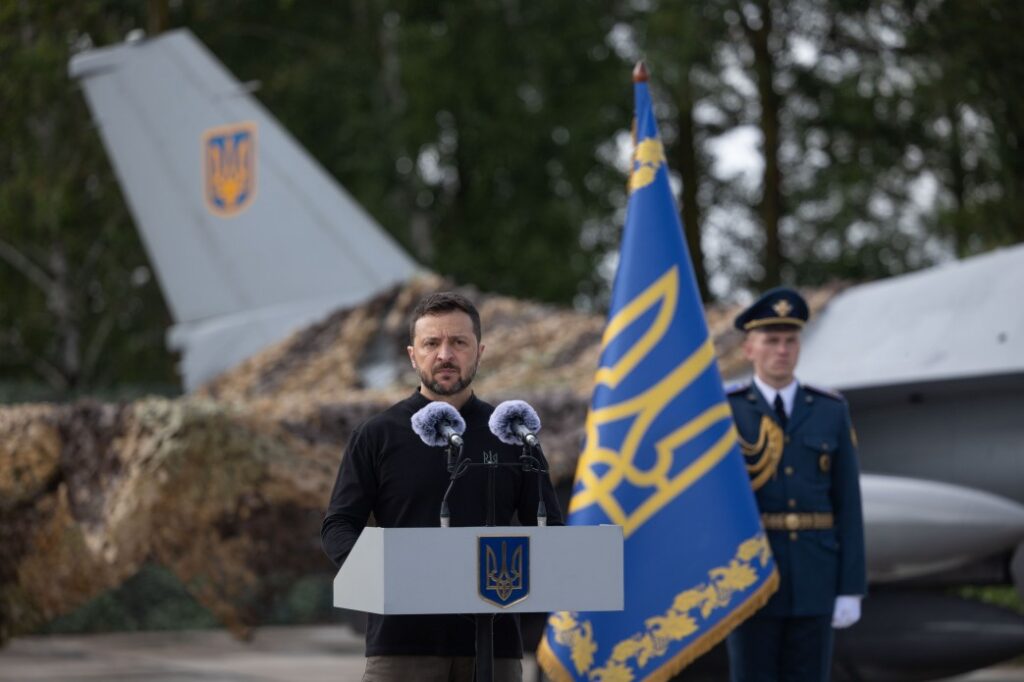
In images and video released by the Ukrainian Ministry of Defence, these F-16s were armed with air-to-air focused load-outs comprised of AIM-120 Advanced Medium Range Air-to-Air missiles (AMRAAMs) and AIM-9M Sidewinder infrared-guided air-to-air missiles.
The AIM-120, which serves as America’s primary beyond-visual-range (BVR) air-to-air weapon, comes in multiple forms, including the AIM-120C, which is optimized for internal carriage in stealth fighters like the F-35, and the AIM-120D — which is among the most capable iterations of the missile ever to reach service. The AIM-120D boasts GPS guidance, anti-jam capabilities, and a maximum engagement range that extends out beyond 110 miles. It isn’t entirely clear which version of the AMRAAM these aircraft are carrying, but previous statements from Ukrainian officials suggest it likely is the AIM-120D.
The AIM-120D is capable of hitting targets further out than the radar on Ukraine’s F-16s could likely identify them, and the weapon itself is network capable, meaning it could get target data from other assets in the battlespace, but it remains unclear as to whether Ukrainian forces will be able to leverage that capability at this point. This also points to the possibility that Ukrainian officials being quoted about the range of the weapons they were receiving could simply have been mistaken, and Ukraine may actually be receiving a less advanced (and long-ranged) iteration of the AMRAAM.
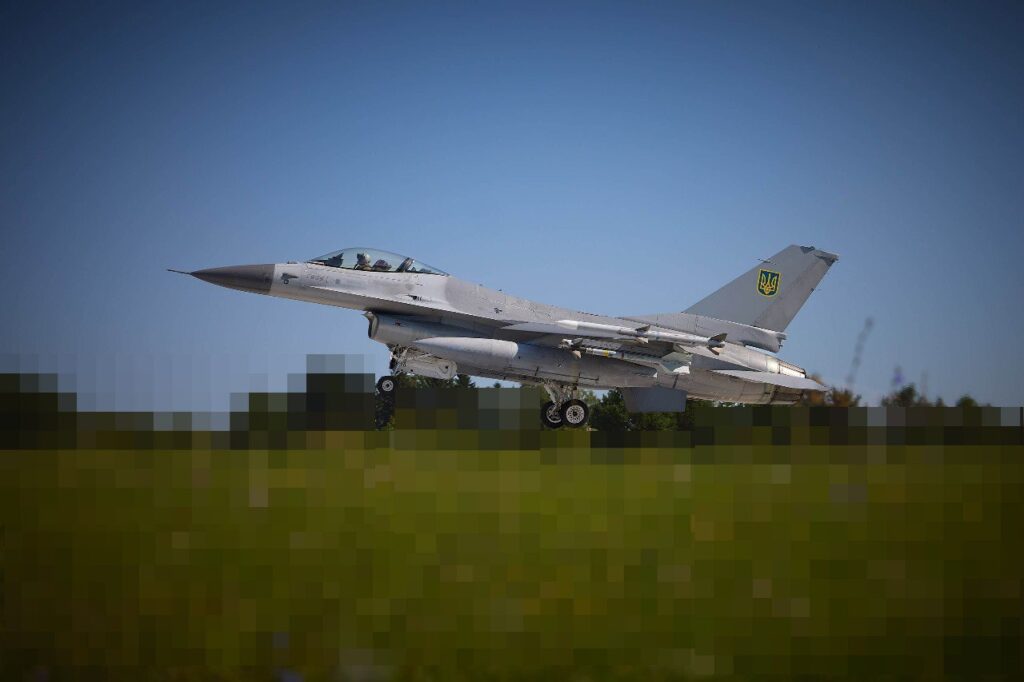
Regardless of which AMRAAM Ukraine’s F-16s fly with, it will represent a significant improvement over the R-27 semi-active radar-guided air-to-air missiles employed by Ukrainian fighter jets today. The R-27 has a maximum range of better than 60 miles, but is much more difficult to employ against enemy fighters due to its lack of onboard radar guidance. Unlike the AMRAAM, which can transition to its own onboard radar seeker as it approaches its target to close the remaining distance unassisted, Ukraine’s R-27s require continued guidance from the fighter’s onboard radar. This means Ukrainian pilots attempting long-range engagements need to chase the missiles they launch, maintaining a lock on their targets until the missiles make impact.
“After all, these aircraft have powerful airborne radars, technological equipment and, most importantly, missiles with active homing heads,” Col. Yuri Bulavka, a Ukrainian Su-27 pilot, said in April when asked why Ukraine needs Western fighters to say viable in the air war.
Russian forces have been attempting extremely long-range engagements against Ukrainian fighters using R-37M radar-guided missiles launched at high altitude by MiG-31BMs, which have a claimed maximum range of around 250 miles — though in practice, Russian aircraft have primarily been employing these missiles from inside of 80 miles — outside the reach of Ukraine’s R-27s, but well within the reach of AIM-120Ds if Ukraine’s F-16s are indeed carrying them.
The AIM-9M Sidewinder seen in these pictures is not quite as advanced and capable as the latest variants of the AIM-9X in use for the U.S. but is nonetheless seen as an extremely potent short-range weapon. The AIM-9M uses a traditional infrared seeker and control surfaces and is limited to engaging targets within the pilot’s forward field of view (as opposed to the AIM-9X’s high off-boresight targeting capability). Like much of the technology found within the F-16AMs being employed by Ukraine, the AIM-9M was cutting-edge in the early 1990s — being credited with at least 10 air-to-air kills in Operation Desert Storm alone.
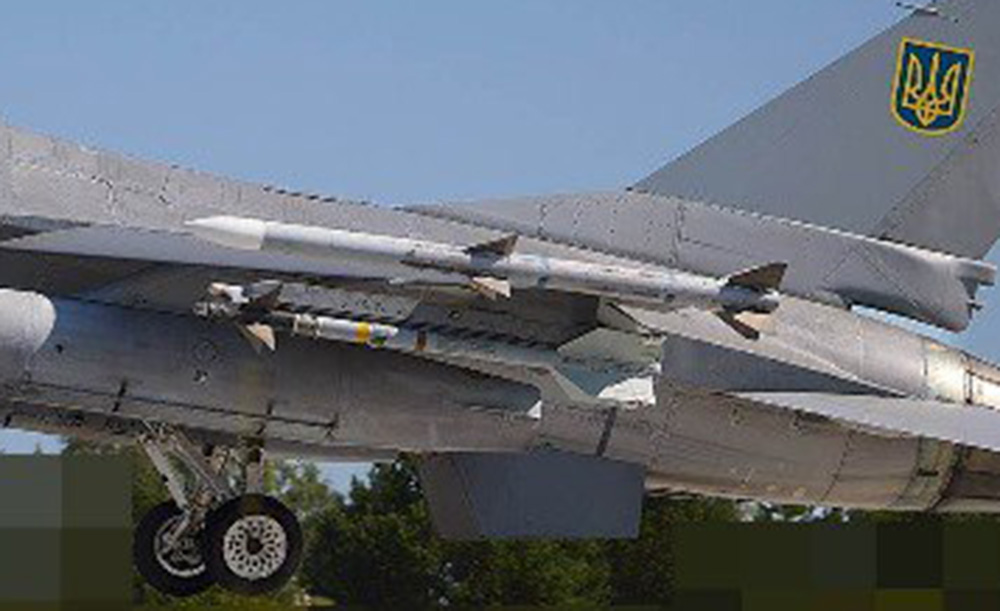
However, according to reports from the Wall Street Journal, Ukraine will indeed be receiving AIM-9X variants of the Sidewinder missile, which will further increase the close-quarters combat capabilities of these F-16s. The AIM-9X not only boasts a significantly improved guidance system to better see through the tricks of common missile countermeasures like flares, but it also offers a massive increase in aerobatic maneuverability. The AIM-9X is famously so maneuverable, thanks to its thrust-vectoring rocket nozzle, that it can even engage enemy aircraft flying behind the launching aircraft — targetable through the helmet-cued targeting system Ukrainian pilots have already been seen training on.
Both the AMRAAM and the Sidewinder (in various iterations for each) will prove valuable not just for air-to-air combat, however — they’ll also be essential for expanding Ukraine’s air defense capabilities. Both AMRAAMs and Sidewinders are capable of downing long-range subsonic cruise missiles like Russia’s air-launched Kh-101, and the Sidewinder is a relatively low-cost option for engaging larger enemy drones than Patriot interceptors.
Related: How the F-16 changed air warfare forever
What types of air-to-ground weapons will these F-16s fly with?
One of the most important air-to-ground munitions these F-16s will leverage is America’s AGM-88 HARM, or High-speed Anti-Radiation Missile.
Ukrainian forces have already been using the HARM since August of 2022 or earlier, but because these weapons were being launched by dated Soviet jets that were never intended to use them, their utility has been dramatically limited.
Anti-radiation missiles like the HARM work by honing on the electromagnetic radiation broadcast by radar arrays – in other words, radar waves – making them uniquely suited for the suppression of enemy air defenses (SEAD) role. American Wild Weasel pilots often fly their aircraft into contested airspace, waiting for enemy air defense systems to power up in an attempt to target them or their wingmen. Once the air defense systems are broadcasting radar waves, Wild Weasel pilots launch their HARM missiles to hone in on those radar waves and destroy the air defense equipment.
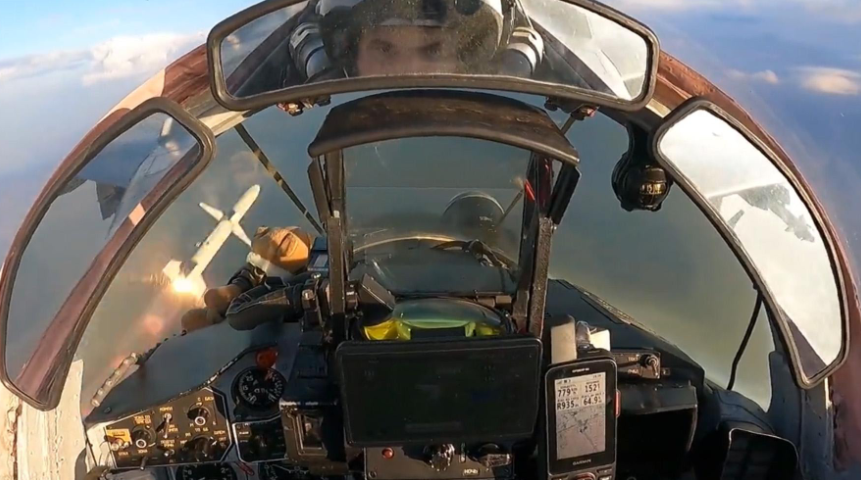
Ukraine’s Soviet-era fighters are only able to leverage the HARM missile in what many call the “pre-briefed” mode. In effect, the missile is pre-programmed with a target area and then launched by an aircraft, often at a fairly long distance. The missile flies toward its intended target area, using its seeker to look for any air defense systems powering up and broadcasting radar waves for it to then close with and destroy.
This method can be very effective, especially when launching these missiles in volume, as even if they don’t ultimately destroy enemy radar sites, their presence alone will often prompt air defense crews to power down their arrays. This effectively amounts to suppression of air defenses, as those powered-down arrays allow aircraft to operate inside the contested area for a short time, but of course, once the HARM threat has passed, these arrays can power back up and begin hunting for Ukrainian jets all over again.
However, if operated by an aircraft carrying NATO-standard busses, like Ukraine’s new F-16s, pilots can leverage the HARM’s full capability set, including two more operational modes that can be very handy in a fight: “Self-protect” mode and “target of opportunity” mode.
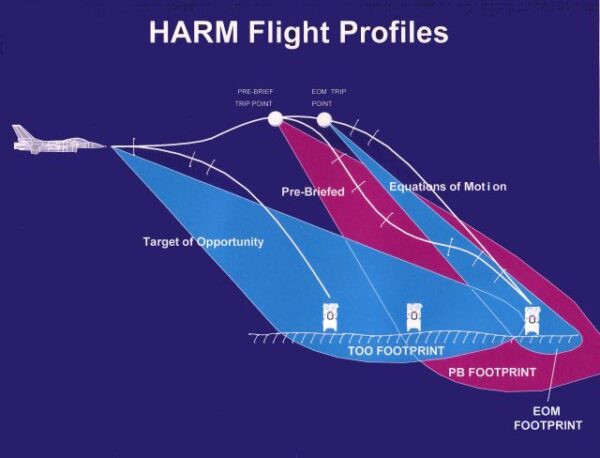
In self-protect mode, the aircraft’s onboard radar warning receiver identifies an enemy radar array that’s broadcasting. It then passes that target data over to the HARM, which can hone in on either the broadcasting radar or the specific location that waves were coming from in the event the enemy powers the system down. The target of opportunity mode is similar but allows the AGM-88’s onboard seeker to spot enemy radar arrays powering up, which then alerts the pilot to launch the weapon.
Another very important weapon system we can expect to see these F-16s leverage is the extender range iteration of America’s long-serving Joint Direct Attack Munition, or JDAM. JDAM kits are, effectively, guidance systems that can be installed on conventional “dumb bombs” to turn them into GPS-guided precision munitions, usually capable of engaging targets from ranges of 15 miles or so. In February 2023, however, the U.S. announced its plans to equip Ukraine with the JDAM-ER, which adds a deployable set of wings to the system to triple its engagement range out to 45 miles or better. Russian forces have seen a great deal of success in recent months using a very similar glide-bomb system, meaning Ukraine should soon be able to give them a taste of their own medicine in that regard.
How do Ukraine’s F-16s compare to those operated by the US?
Ukraine’s new (old) fighters are being transferred from the inventories of Denmark, the Netherlands, Belgium, and Norway — and while these aircraft do share the same design as America’s in-service F-16s, the hardware and software found onboard is often quite a bit more dated. These F-16AMs were built and delivered in the 1970s, before undergoing what’s called a “Mid Life Update” (MLU) in the early 2000s to bring them more-or-less on par with the Block 50/52 F-16Cs and Ds operated by the United States during Operation Desert Storm in the early 1990s.
One of the most important elements of this update was the inclusion of the Texas Instruments Modular Mission Computer (MMC), which in conjunction with a cockpit refresh helped to bring these 1970s hotrods into the digital age, making it possible to leverage a breadth of new weapons and auxiliary systems through an improved pilot interface.
While Ukraine’s F-16s do lack the Active Electronically Scanned Array radar found in many American F-16s, they do carry the updated AN/APG-66(V2) Fire Control Radar, which is a medium-range pulse-doppler planar array said to offer a 25% improvement in detection range over the aircraft’s original array. This system is capable of tracking up to ten targets simultaneously while scanning the area and offers what’s commonly called a “six on six” AMRAAM capability — which means the radar can support long-range engagements of up to six targets at once using an onboard complement of AIM-120 radar-guided air-to-air missiles.
The original AN/APG-66 was said to have a target detection range out beyond 90 miles (150 km) and the ability to track fighter-sized targets at ranges of roughly 35+ miles (60 km), but the APG-66v2 found in Ukraine’s new F-16s is said to boast a roughly 25% improvement in detection and tracking performance. That pushes those ranges out to roughly 110+ miles for detection and a bit north of 43 miles for targeting fighters, though it should be noted that these are unclassified figures and should be taken with a hearty helping of salt.

As first reported by The Warzone, Ukraine’s F-16s shown in recent images and videos seem to be equipped with Denmark’s Pylon Integrated Dispensing System Plus (PIDS+) and possibly with the Electronic Combat Integrated Pylon System Plus (ECIPS+). These systems, which you can see in the images look sort of like weapon pylons with optical sensors, include integrated radar-warning receivers to notify the pilot of nearby threats and missile approach warning sensors (MAWS) to let them know when trouble’s coming. This will be of particular value in attack and air defense suppression missions, as the Su-25s employed by Ukraine to date don’t even have radar-warning receivers onboard to speak of.
“Our jets don’t have a system to warn about [Russian rocket] launches,” said a Ukranian Su-25 pilot with the call sign Pumba. “It’s all visual-based. If you see them, then you just try to escape by firing off heat traps and maneuvering.”
Depending on the system in use, these integrated systems can either provide additional flares and chaff to confuse inbound missiles or more advanced Northrop Grumman-sourced electronic warfare capabilities.
Be prepared: F-16s will be shot down
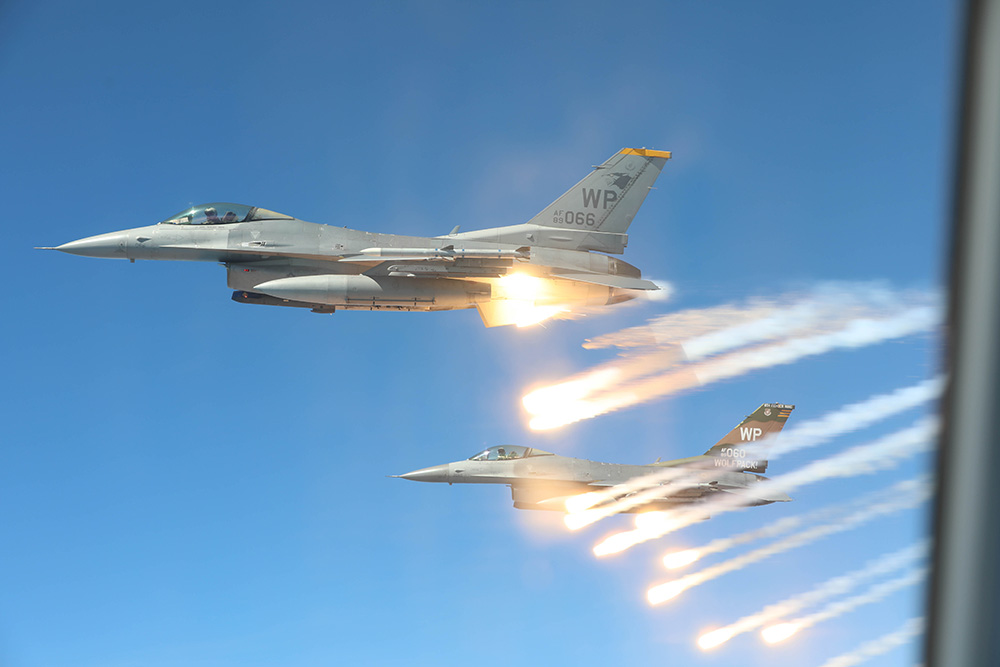
Put simply, these are fairly modern F-16s with all the bells and whistles you might expect to find in such a fighter operated by nations without top-tier funding for the latest and greatest gadgets, making them a significant threat to Russian aviators, but not necessarily the technological overmatch one might expect in an engagement between American F-16s and Russian fighters. In practical terms, Ukraine will soon be operating between 60 and 80 total F-16s, which is certainly a significant development but is far from enough to offset the numerical advantage represented by Russia’s fighter fleets.
The F-16 is a highly survivable fighter, as demonstrated by its performance in conflicts like Operation Desert Storm, where one F-16 managed to dodge six incoming surface-to-air missiles in rapid succession without the use of countermeasures at one point — but it’s important to remember that Russia’s S-300 and S-400 air defense systems are the most advanced these fighters have ever squared off against in modern warfare. The F-16 is not a stealth fighter, and as such, is still very vulnerable to being detected and targeted by Russian air defenses, just as the rest of Ukraine’s fighters have been throughout this conflict. But more than that, Russia will be making it their business to engage and destroy as many F-16s as they can as quickly as they can to limit the positive effect these fighters can have on Ukrainian morale and Western support.
Russia’s emphasis on managing the perceptions of the world at large through concerted disinformation campaigns tightly interwoven with real and manufactured news out of the battlefield is sure to be working overtime to find ways to portray these F-16s as ineffectual or highly vulnerable, and that will almost certainly will come with a heavy allocation of resources meant to down these jets for the sake of that narrative (and of course, to minimize their actual strategic impact). These fighters are most vulnerable on the ground, meaning Russian airstrikes will be placing a large emphasis on not just destroying the jets, but runways and support facilities required to operate them.
To put it simply, these aircraft will be operating with a big target on their back, and the nature of warfare all but assures that some of them will go down fighting or likely, be destroyed on their runways. These losses will be framed in the media as a significant development — for the sake of driving clicks in the West, and for the sake of driving narrative out of Russia — but losing aircraft is just what happens in the war-fighting business.
F-16s will not win this war for Ukraine, but they could play a vital part in a broader strategy aimed at doing so — and to use them effectively to that end, risk will be an inherent part of the job. So, as these jets slowly start getting into the fight, it’s important to maintain a realistic perspective about what they are and what they can do… But just as importantly, what they can’t. F-16s are incredible jets that can do some positively mind-bending things, but at the end of the day, they’re not invulnerable, especially when sitting on the tarmac.
Of course, there will be some pro-Russian commenters who will pretend this sort of pragmatic realism is a new development, as Western analysts try to hide their fear that NATO’s super fighters might not be as invincible as we once claimed… But let’s not fall for that tired old narrative either, folks. There’s no such thing as an invincible fighter, tank, or anything else for that matter. There are only tools, strategies, and incredibly brave men and women tasked with employing the first for the sake of the second.
Warfare is a dirty business, and while the F-16 won’t end that for Ukraine, it will equip them to fight just a little bit dirtier than ever before.
And that’s really what transferring these jets has always been about.
Read more from Sandboxx News
- ‘Land of Bad:’ JTAC and Delta Force-centered movie is worth a watch
- The Marines’ drone-killing machine preps for ultimate gear test
- New Cold War heats up: US to deploy missiles and hypersonic weapons to Germany
- Inside the recovery of MIA Americans from a secret jungle base
- F-16s carrying the A-10’s 30mm cannon actually saw combat
Related Posts
Sandboxx News Merch
-

‘AirPower’ Classic Hoodie
$46.00 – $48.00 Select options This product has multiple variants. The options may be chosen on the product page -

‘Sandboxx News’ Trucker Cap
$27.00 Select options This product has multiple variants. The options may be chosen on the product page -

F-35 ‘Lightning’ Framed Poster
$45.00 – $111.00 Select options This product has multiple variants. The options may be chosen on the product page

Alex Hollings
Alex Hollings is a writer, dad, and Marine veteran.
Related to: Ukraine
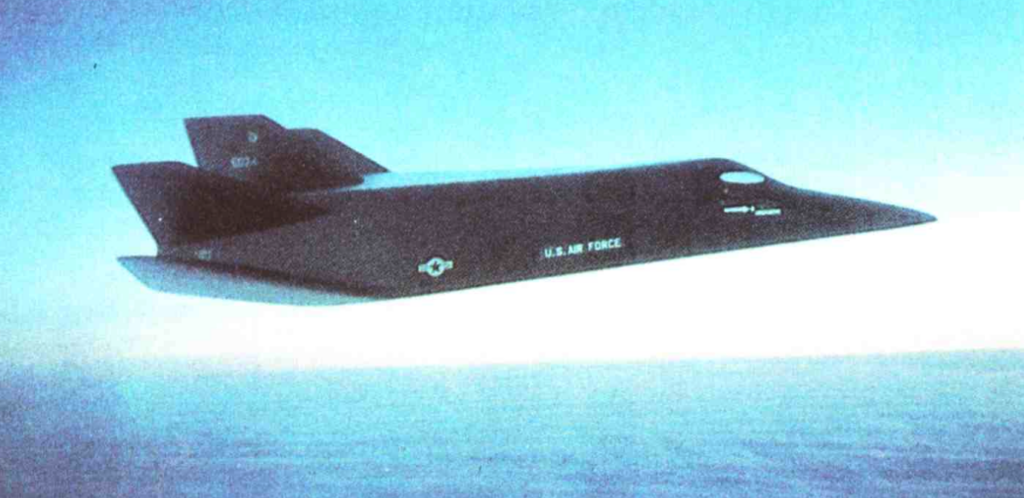
Game-changing military aircraft that were canceled before they could change the game
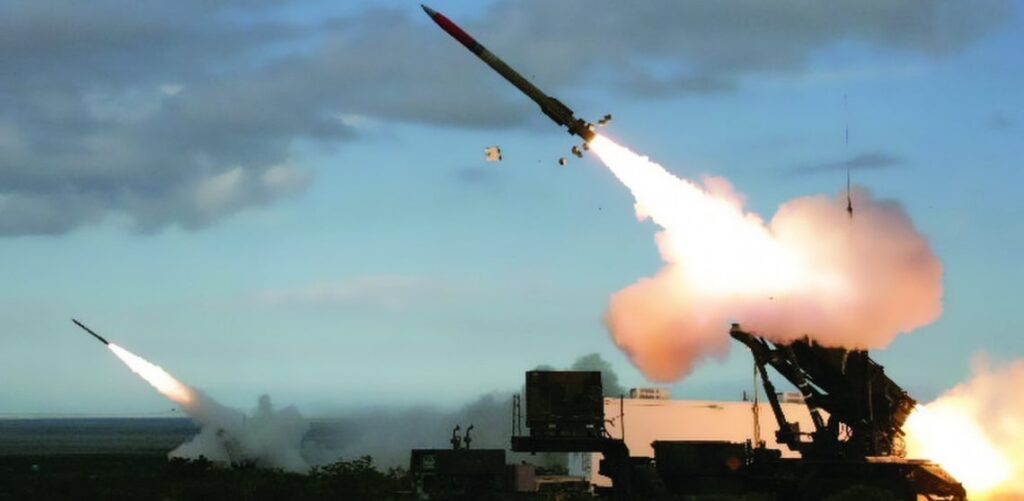
The ultimate guide to the Patriot air defense system
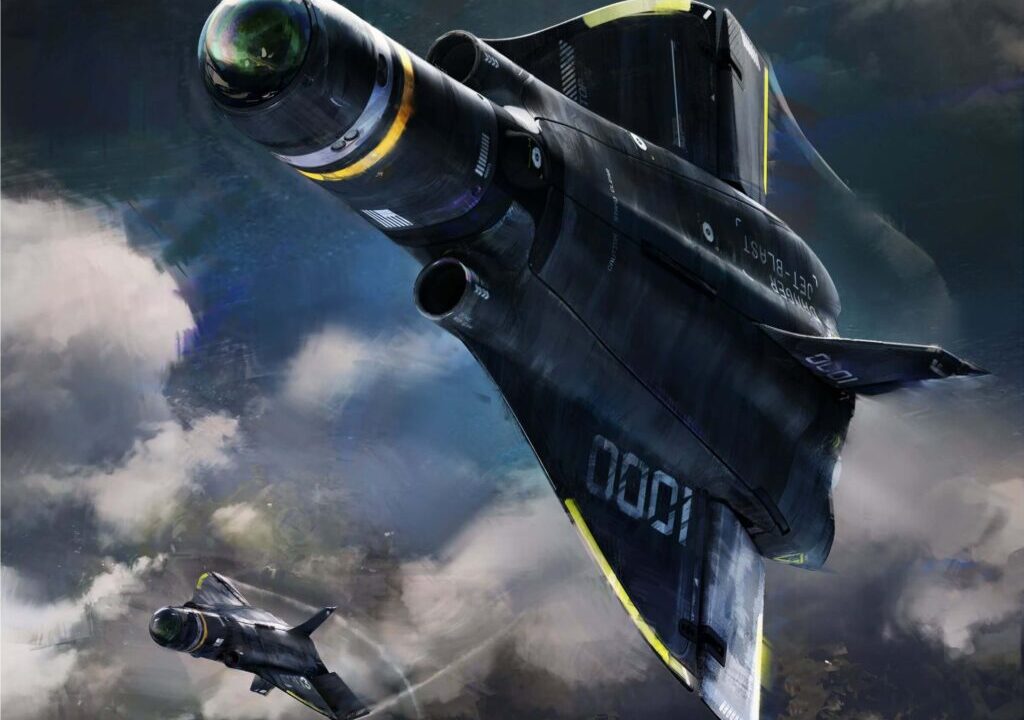
Anduril’s Roadrunner is a unique reusable missile interceptor
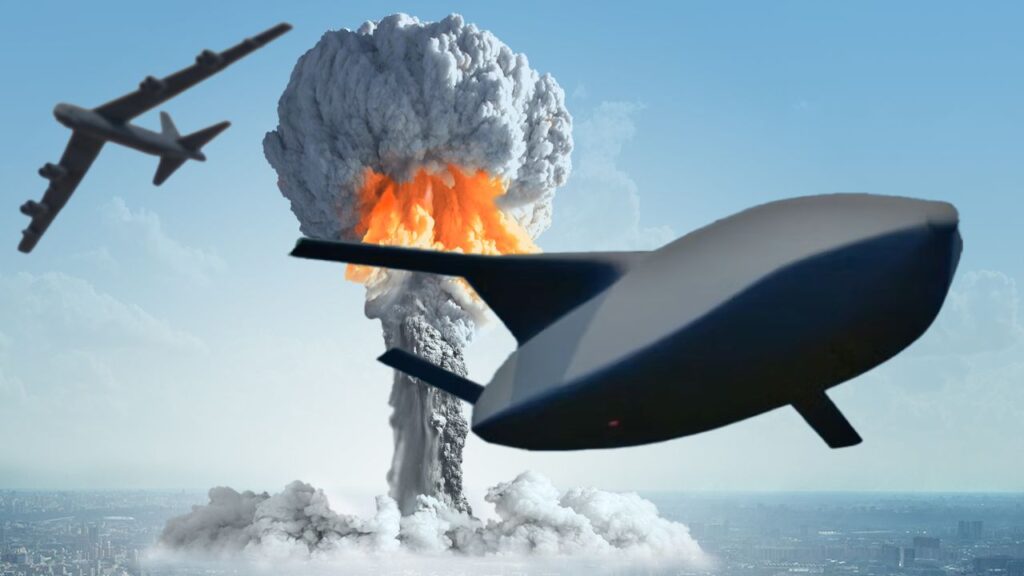
The AGM-181 LRSO missile will modernize America’s nuclear triad
Sandboxx News
-

‘Sandboxx News’ Trucker Cap
$27.00 Select options This product has multiple variants. The options may be chosen on the product page -

‘AirPower’ Classic Hoodie
$46.00 – $48.00 Select options This product has multiple variants. The options may be chosen on the product page -

‘AirPower’ Golf Rope Hat
$31.00 Select options This product has multiple variants. The options may be chosen on the product page -

‘Sandboxx News’ Dad Hat
$27.00 Select options This product has multiple variants. The options may be chosen on the product page
